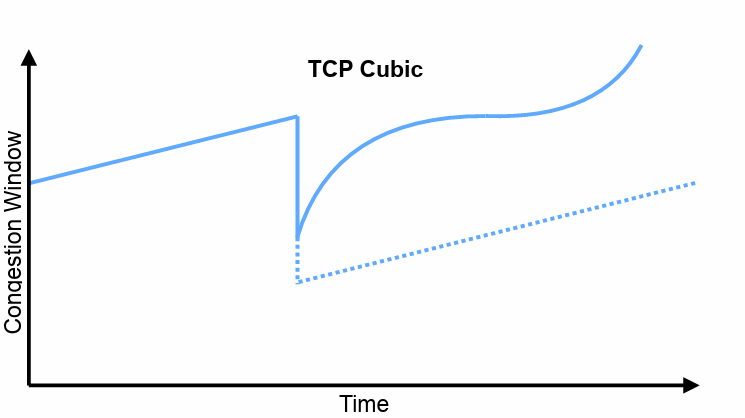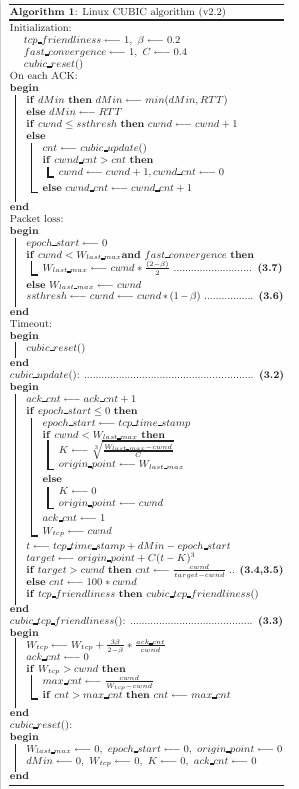Abstract
TCP Cubic changes the congestion control algorithm. During congestion avoidance, increases congestion window faster than TCP Reno on fast long-distance networks → Slows rate of increase as window approaches the largest successfully achieved window
Ex:

 On packet loss during congestion avoidance, TCP Cubic reduces congestion window:
TCP Reno uses
TCP Cubic is more aggressive
On packet loss during congestion avoidance, TCP Cubic reduces congestion window:
TCP Reno uses
TCP Cubic is more aggressive
After packet loss during congestion avoidance, TCP Cubic increases the congestion window as:
is the maximum window size reached before the loss • is the time since the packet loss • is the time it will take to increase the window back to , assuming no further packet losses • is a constant that controls fairness to TCP Reno
Many additional details included to ensure fairness with TCP Reno on slower, shorter-RTT, networks
TCP Cubic is default in most modern operating systems
- Much more complex than TCP Reno – core response is relatively straight-forward
- Much complexity ensures fairness with TCP Reno in its typical operating regime; improves performance for networks with longer RTT and higher bandwidth Both algorithms use packet loss as congestion signal and eventually fill router buffers Trade latency for throughput